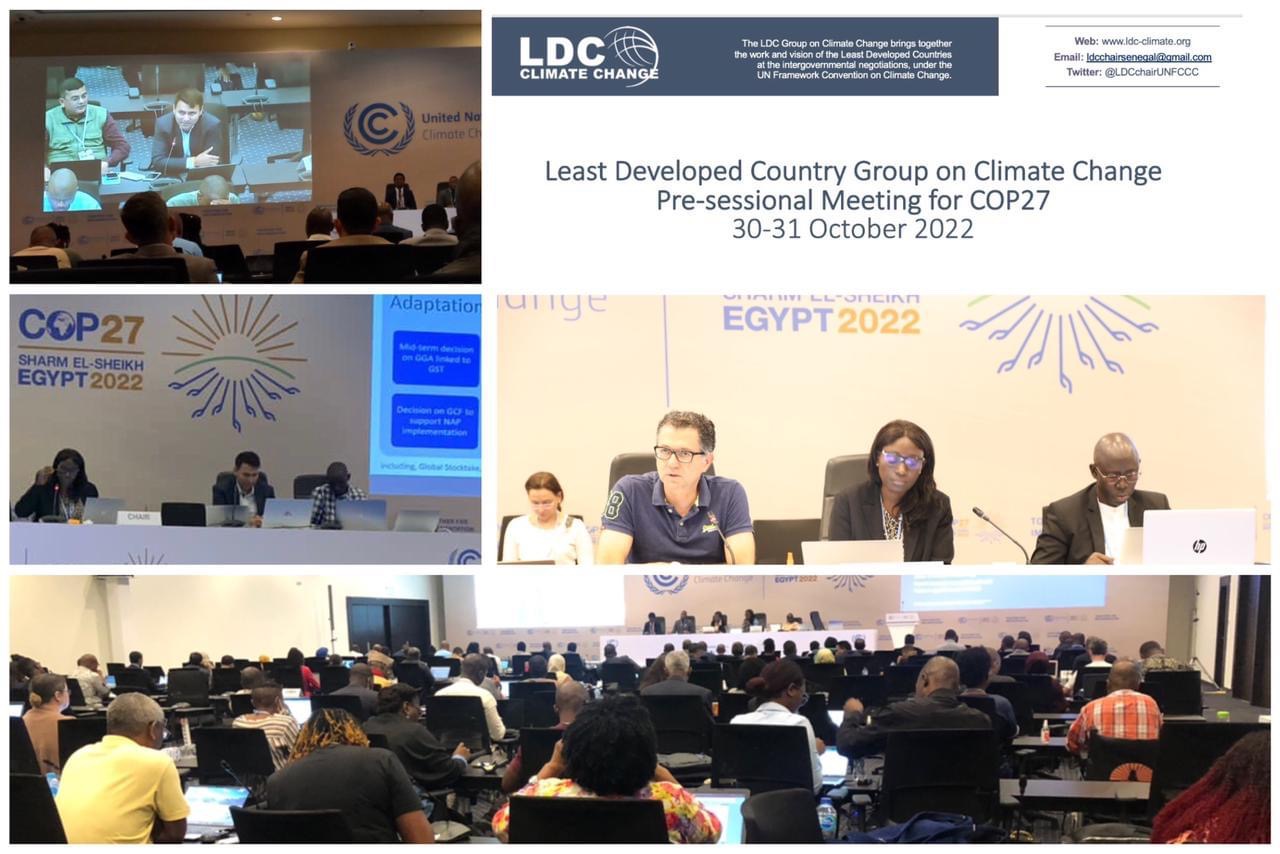‘South Asia, particularly the Himalayas, are highly vulnerable to the changing climate and weather phenomena’

Dr Ngamindra Dahal
Currently the Chairperson of Nepal Water Conservation Foundation (NWCF), Ngamindra Dahal, has over 25 years of professional journey in the field climate, water and disaster risk management. With hydro-meteorology as a foundational degree, he holds PhD on environmental sciences with a focus on biochar as a potential technology for achieving the dual climate goals on mitigation and adaptation fronts. He also led a professional team for studying depleting spring sources across the mountain region of Nepal. He has worked withNTNC, Ministry of Environment (Nepal), ADB, World Bank, ICIMOD and UNDP, among others. A founding member of both South Asian Meteorological Association (SAMA) and Society of Hydrologists and Meteorologists-Nepal, he is alsoExecutive Member of Climate Action Network South Asia (CANSA).Dr Dahal spoke to SOUTH ASIA TIME on the impact of climate change on livelihoods in South Asia and beyond. Excerpts of the interview:
Nepal, as well as parts of Northern India and Bhutan, braced heavy rainfall in late September causing huge loss of lives and property. Is such heavy rainfall at the end of the monsoon season normal or is it due to climate change?
This particular event was a rare but not an abnormal one. Nepal and the greater Himalayan region have received heavier rainfall than this one in the past. This year’s event, however, remains exceptional in terms of severity of precipitations that used to occur in the southern parts of the Mahabharat belt but shifted northward over Kathmandu and its surroundings. According to Ministry of Home, 228 people were killed and over billions of public properties destroyed, which is estimated to be around 1% of the country’s GDP. Early warning notices from the Met Office proved grossly inadequate to save lives and properties from the intense precipitations and subsequent impacts. Thus, the disaster has exposed the wider gaps between our preparedness and actual strength to respond in the situation of a real time.
What are the key vulnerabilities of South Asian countries to climate-induced disasters like floods, landslides, and droughts?
Himalayan mountains are inherently vulnerable and fragile mainly because of their formative stages coupled with the extreme cycles of tropical climate including the powerful monsoon weather. A series of rainstorms dump 2000mm in less than 100 days that often bursts to produce heavy flood multiplied with landslides and erosions. High rates of sedimentation along the Himalayan rivers are spectacular evidences of their risks of breaching the banks and inundating the valleys and plains in the south. The colossal losses happened even after an advanced weather warning by the Met Office, and, none of the precautionary measures worked to save lives and properties in the Kathmandu Valley and the major highways connecting the capital city to the rest of the country. The meteorological data of the single storm reveal several dimensions of the extreme rainfall pattern of Nepal. First of all, the most damaging rainstorm that occurred on 28thSeptember was in Lele of Southern Lalitpur with an incredible strength of 325mm. A similar incident had hit the area in 1981 causing heavy landslides and floods. This time, the coverage of the rainfall was not limited to a pocket area but more widespread that extended to 48 hours or more. This was thereason behind the dense landslides and overflowing the riverbanks to inundate the settlements and markets in the capital. However, the scale of damages cannot be blamed alone to these extreme weather events as they were less powerful than the project scenarios. While looking back to the nature of destructions that claimed so many lives and livelihoods, it reveals that the natural hazards triggered the incident but multiplied due to badly designed and implemented development schemes.
How is the Himalayan ecosystem, a vital resource for the region, being affected by rising temperatures and changing weather patterns?
The diverse Himalayan ecosystems are renowned for their rich diversity and sensitive responses to the changing climate. In fact, their health offer valuable information as a barometer reading. In the last three decades, they consistently show rapid decline in their richness and vitality. The impacts are more severe in the higher altitudes with alpine climate. The key drivers of the changes have been the shifting and intensifying precipitations, rising temperatures and number of warmer days. The major consequences include the growing number of landslides and avalanches, flashfloods, unprecedented cases of climate induced losses and changes in hydrological patterns accelerated by high rates of erosion and mass waste.
How could South Asian nations cope with the changing climate?
South Asian countries face dual challenges of changing climate: first, growing climate induced hazards and, second, socio-economic vulnerability fueled by unsustainable development infrastructures including housing, settlements, agriculture and access to basic services. The projected scenarios of climate induced hazards suggest us to expect more frequent and severe events in the coming days. Consequently, the climate impact vulnerability study of the civil infrastructure and agricultural sectors have underlined their climate resilient reinforcement. In broad terms, both the natural heritages and human infrastructure of the South Asia in general and Himalaya in particular are among the highly vulnerable region to the changing climate and weather phenomena. They also can be categorized into those occurring due to wetter monsoon between June to September and those of others that occur in the rest of months. The extreme precipitations and droughts have been the key natural hazards that would trigger the cascading risks in a sequential order. Poorly planned and built road networks, the unplanned settlements or market place along the roadside, riverside, unstable slopes or low-lying zones are the most vulnerable infrastructure due to wet monsoon.
What role does regional cooperation play in addressing the cross-border impacts of climate change in South Asia, such as water resource management and disaster preparedness?
Given the transcendental nature of climate change impacts, regional cooperation is an essential strategy to learn, negotiate and resolve common and cross border issues such as water and flood management, air pollution and migration. The SAARC used to serve as the common platform to discuss such issues in the past. In absence of a functional SAARC since its eighteenth Summit held in 2014, no good alternatives are available for engaging government officials. This has impeded the progress towards developing a common position of the South Asian countries on the burning issues of climate change, water management and disaster risks reductions.
In the run up to COP29, what issues should Least Developed Countries (LDCs) raise with western industrialised countries that are mainly responsible for the climate crisis?
The major focus of the recent COPs has been on the ‘unfulfilled commitments’ of the industrialized countries on both mitigation and adaptation fronts. The recent stocktake of the progress revealed that the progress towards fulfilling the past commitments is disappointing. The issue of climate finance through multiple channels, namely, mitigation, adaptation and Loss and Damage (L&D) is critical for supporting LDCs’ climate actions. Promotion of the L&D as the third pillar of climate response is an urgent step that should be complemented with adequate and dedicated funding. On this front, the COP 29 should be an opportunity for the LDCs and other vulnerable nations to take a common stand for securing the funds by pressing the responsible parties for their historical emissions and concurrent commitments for the same.
The humanity is said to be facing triple crisis now (namely climate change, pollution and biodiversity loss), but the message seems to have been lost vis a vis political leaders as well as common people. In your view, what is missing in climate change communication?
On climate change issues, all the different parties have lost the golden opportunities on three fronts: developed economies could set examples by acting on mitigation measures while fulfilling their commitments of climate finance to the Least Developed Countries (LDCs) and vulnerable nations, those of emerging economies could have chosen the low emission track of development, and, the LDCs on adopting climate resilient path of development while reducing maladaptationand corruption. As a consequence, there is a situation of chaos due to blame games at the political levels thus, impending policy actions, more alarming scientific findings in absence of collective climate actions, and growing losses and damages in LDC economies as they are annually losing more than 1% GDP due to intensifying impacts of climate change.
How could Nepal cope with increasing extreme weather events?
While Nepal is annually losing more than 2% of its GDP due to climate change induced loss and damage, we need to understand that no one will help us to recover these recurrent losses except our own hard earned resources. Two major ways to survive through this crisis are, first, by making our critical infrastructure climate resilient and, second, reducing maladaptation, which is essentially addressing rampant corruption on spending development budget including unfeasible and costly political structures of the country.



















Facebook Comments